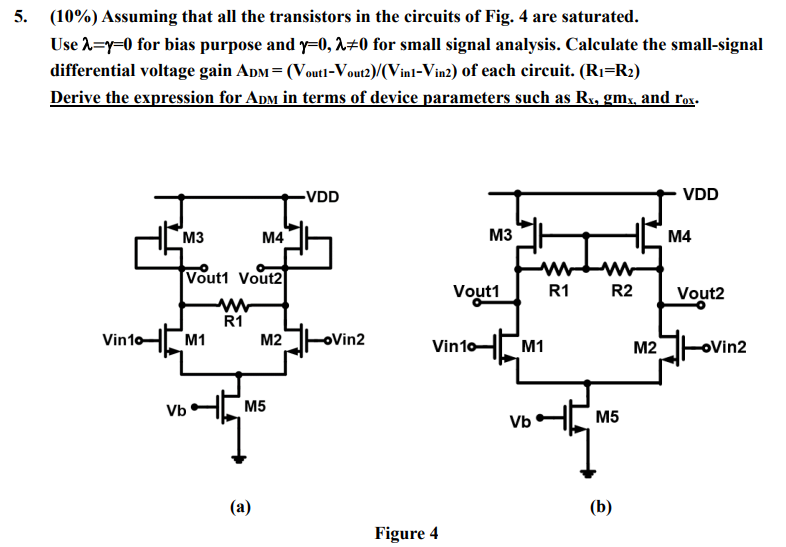(10%) Assuming that all the transistors in the circuits of Fig. 4 are saturated. Use λ = γ = 0 for bias purpose and γ = 0, λ ≠ 0 for small signal analysis. Calculate the small-signal differential voltage gain ADM = (Vout1 − Vout2 )/(Vin1 − Vin2 ) of each circuit. (R1 = R2) Derive the expression for ADM in terms of device parameters such as Rx, gmx, and rox. (a) (b) Figure 4
